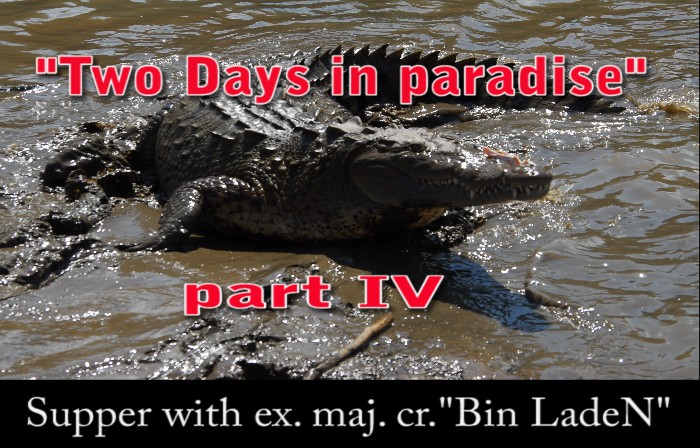Illar Muul, PhD
President and Founder of Integrated Conservation Research
http://www.integratedconservat...
The October 2012 issue of National Geographic Magazine presents a detailed analysis of the consequences of the illegal ivory trade. As a former recipient of National Geographic research funding, I am most concerned about conservation of endangered species. The information outlined in the article is detailed and devastating. The Convention on International Trade in Endangered Species (CITES) in 2011 estimated that illegal hunting of elephants exceeded 25,000 per year (pg54). The revenues involved in illegal trade in 2011 in one shipment from Africa to Thailand alone were valued at $3million (or $12,146 per tusk) (pg45). Yet, periodic legal sales of ivory have brought far less (about $740 per tusk in 2008) (pg60).
The author presents detailed and graphic data on the problems both in Africa and Asia, and interviews with members of CITES, as well as, people involved in illegal ivory trade.
Page 50-51 shows burning of 5.5 tons of smuggled and confiscated ivory in Kenya in 2011 (worth about half million dollars, based on legal sales). The September 1989 issue of LIFE Magazine carried a similar photo from Kenya of 12 tons of ivory being burned at the orders of President Daniel arap Moi in order to call the world attention to the illegal hunting of elephants and to reduce the demand for ivory products. The LIFE Magazine pointed out that since 1970 the numbers of elephants had been reduced from 120,000 to 17,000 in 1989 (in Kenya). President Bush, Sr announced a U.S. ban on ivory imports in 1989. Internationally, CITES banned ivory trade among signatory countries. In the years prior to the ban in 1989, 600,000 elephants were “lost”, according to a CITES statistician.
However, since the ban on legal trade the price of ivory increased 20 fold compared with prices achieved in legal sales in 2008 (pg 61), which were sanctioned to reduce demand (profits) for illegal ivory. Clearly, the strategy of the past decades has not worked and the demand for ivory products has not subsided. The high prices paid in the illegal market provide a strong incentive for a continued slaughter.
The article does not offer solutions, but in the data presented are reasons for some optimism. Countries in Eastern and Southern Africa are losing far fewer elephants to poaching than those elsewhere. This is partly owing to nature tourism (safaris) which is a large source of foreign revenue. Also, in those countries far more land for elephants has been saved from development and over-hunting. In the Democratic Republic of Congo elephants have disappeared from about 90% of their former range since 1979 owing to development, wars, and rampant deforestation.
In politically unstable Somalia, nearly all of the former populations have been exterminated. However, in Botswana and Angola, less than half of former elephant range has been usurped by human populations and elephant populations are growing. Yet, in Sri Lanka and Thailand where elephants are valued in their religious context and as beasts of burden, the vast majority of former elephant range has been encroached by growing human populations. Resulting conflicts between elephants and people have resulted in deaths on both sides.
A recent documentary reported that 70% of the elephant population in Sri Lanka lives outside National Parks dedicated for their protection. My good friend John Eisenberg and his colleagues played a large role in the 1960’s in training local scientists and conservationists and since then Sri Lanka has become a model for conservation of tropical rainforests. But, the conflict has not been resolved.
In Malaysia where I conducted field studies, for many years, I observed directly the conflict between elephants and people. Today, most of these areas have been deforested. Neither the elephants, nor the aboriginal people in many areas, have the natural resources on which they depended. My own opinion is that habitat loss has had as great, if not greater, negative affect on elephant populations in Asia as has poaching for ivory.
For the past 25 years, our NGO: Integrated Conservation Research (ICR), has been attempting to resolve conservation challenges related to tropical rainforests. In some areas we have had great success, such as in “nature interpretation” and tourism. We have completed 11 pioneering projects and advised on many more, in Asia, tropical Americas, and Africa. These projects have become highly profitable, validating the economic value of conserving tropical rainforests for endangered species and for people (hundreds of jobs have been created through direct and indirect involvement).
However, because ICR’s strategy is innovative, but often counterintuitive, it has caused controversy and has been rejected in most aspects by many mainstream conservationists. This has resulted in great difficulty in obtaining financial support from traditional funding organizations (negative peer reviews). Most of our funding has come directly from stake holders, governments, and private investors, who have greatly benefited from the projects we developed for them.
Although we welcome donations, we prefer “investments” in order to validate our motto “Doing well by doing good” (please check out www.incores.org ).http://www.integratedconservationresearch.org/
So, what would ICR do differently in the case of elephants? That will be discussed in our next article.
Editor’s Note:
A fund has been set up by:

958 Broadview Avenue Toronto Ontario M4K 2R6
phone (416) 465-4659 or toll-free 1-866-844-3828
fax (416) 465-8442
Estonian World Review INC 129690
A fund has been set up by Estonian World Review to support ICR. Please help support this worthy organization and forward this article to those who would be interested in “common sense” solutions to complex conservation challenges. The future of elephants and many other endangered species is at stake. You may agree that “common sense” is often not so common. Dr. Muul has summarized the problems that are so well analyzed by the National Geographic Magazine. We look forward to Dr. Muul’s interpretation of this horrible situation, and possible res
olutions.
























